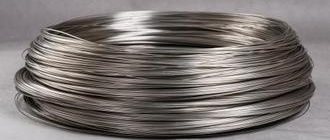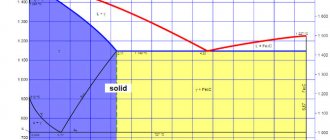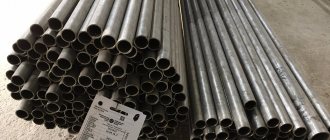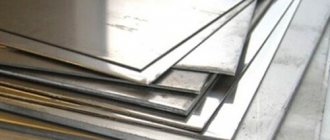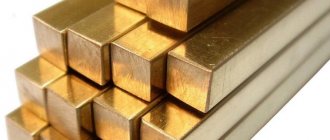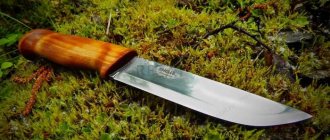Food grade stainless steel, as stainless steel is abbreviated to be used for the production of products that come into contact with food and liquids during their operation, is a material with a special chemical composition. The properties of this metal, represented by various grades, determine a fairly wide scope of its application.
Stainless steel sheet grade 08Х18Н10 (AISI 304) polished in film
Areas of application
Particularly high demands are placed on the materials used in the manufacture of various products, containers, containers, pipelines and equipment used in the food industry. This is explained by the fact that such materials, during operation, not only constantly come into contact with liquid and moist environments, but are also exposed to high temperatures, as well as chemically aggressive substances.
Conventional stainless steel is not always able to withstand the conditions in which food products are stored, transported and processed, despite the fact that it is highly resistant to corrosion. That is why specialists have developed special stainless steels classified as food grade.
Food manufacturers use stainless steel pipes, which are connected with appropriate fittings that meet the requirements of the DIN 11850 standard.
Food grade stainless steel has a number of advantages, among which the following are worth highlighting:
- compliance with strict hygienic and toxicological requirements;
- aesthetically attractive appearance;
- ease of maintenance;
- environmental Safety;
- strength and wear resistance;
- exceptional resistance to various types of aggressive environments;
- compliance with the requirements for the dissolution of heavy metals in the working environment.
Not only a specialist, but also any housewife knows that the most convenient to care for and beautiful are those pots and cutlery that are made of stainless steel. In addition, sheets of this metal are used to make baking trays for ovens, stove bodies, refrigerators and other household appliances. Recently, the scope of application of food grade stainless steel has been constantly expanding.
In any kitchen, food-grade stainless steel is present in abundance: from cutlery to finishing furniture facades
Stainless steel is an almost irreplaceable material used for the production of various equipment and elements of equipment for enterprises dealing with the production, processing and storage of food products and liquids. In particular, this metal is used to produce containers of various volumes, pipes, trays, and elements of technical devices used to grind food products, mix them, sort them, and heat treat them.
Characteristics of AISI 304 stainless steel
Grade 304 AISI is the most versatile and most widely used of all stainless steel grades. Its chemical composition, mechanical properties, weldability and corrosion/oxidation resistance provide the best choice in most applications at a relatively low cost. This steel also has excellent low temperature properties. If intercrystalline corrosion occurs in high temperature zones, its use is also recommended.
Russian analogue of 304 AISI according to GOST - 08Х18Н10, 304 L AISI - 03Х18Н11.
Application area
304 AISI is used in all industrial, commercial and domestic areas due to its good anti-corrosion and temperature resistance. Here are some of its uses:
- Tanks and containers for a wide variety of liquids and solids;
- Industrial equipment in the mining, chemical, cryogenics, food, dairy and pharmaceutical industries.
Differentiation of the 304 AISI brand
During the production of steel, the following special properties can be specified, which predetermines its use or further processing:
- Improved weldability;
- Deep drawing, Rotary drawing;
- Stretch forming;
- Increased strength, cold hardening;
- Heat resistance C, Ti (carbon, titanium);
- Mechanical restoration.
Chemical Composition (ASTM A240)
| C | Mn | P | S | Si | Cr | Ni | |
| 304 AISI | 0.08max | 2.0 | 0.045 | 0.030 | 1.0 | 18.0 to 20.0 | 8.0 to 10.50 |
| 304L AISI | 0.03 max | max | max | max | max | 18.0 to 20.0 | 8.0 — 12.0 |
Typical Annealed Properties
The properties stated in this publication are typical of one plant's production and should not be regarded as guaranteed minimum values for the entire specification.
Mechanical properties at room temperature
| 304 AISI | 304L AISI | |||
| Typical | Min | Typical | Min | |
| Rp m Ultimate strength (tensile), N/mm2 | 600 | 515 | 590 | 485 |
| Rp0.2 Elastic Limit, (0.2%), (yield), N/mm2 | 310 | 205 | 310 | 170 |
| A5 relative elongation, % | 60 | 40 | 60 | 40 |
| Brinell hardness - HB | 170 | — | 170 | — |
| Fatigue strength, N/mm2 | 240 | — | 240 | — |
If necessary, the strength of austenitic steel can be increased as follows:
- adding nitrogen to steel (eg 304LN AISI);
- form strengthening of steel at the factory (repeated skin-pass rolling; cold-working; stretching; pressure).
Nitrided stainless steel is used particularly in applications such as large tanks, columns and shipping containers, where the higher design strength (Rp0.2) of the steel allows for reduced wall thickness and savings in material costs.
Other applications for form-hardened austenitic steel include, for example, various forming plates for the vehicle industry, welded pipes, keg hoops, chains, strips and support elements.
Properties at high temperatures
All these values apply to 304 AISI only. No values are given for 304L AISI because its strength decreases noticeably above 425°C.
Tensile strength at elevated temperatures
| Temperature, °C | 600 | 700 | 800 | 900 | 1000 |
| Rp m Ultimate strength (tensile), N/mm2 | 380 | 270 | 170 | 90 | 50 |
Minimum values of elastic limit at high temperature (1% deformation in 10,000 hours)
| Temperature, °C | 550 | 600 | 650 | 700 | 800 |
| Rp1.0 1.0% plastic deformation (yield), N/mm2 | 120 | 80 | 50 | 30 | 10 |
Maximum recommended service temperatures (scaling temperature)
Continuous exposure 925°C intermittent exposure 850°C
Properties at low temperatures (304 AISI, 304L AISI)
| Temperature, °C | -78 | -161 | -196 |
| Rp m Ultimate strength (tensile), N/mm2 | 1100/950 | 1450/1200 | 1600/1350 |
| Rp0.2 Elastic Limit, (0.2%), (proof of yield), N/mm2 | 300/180 | 380/220 | 400/220 |
| Impact strength, J | 180/175 | 160/160 | 155/150 |
Corrosion resistance
Acidic environments
Examples are given for some acids and their solutions (most general values):
| Temperature, °C | 20 | 80 | ||||||||||
| Concentration, % by weight | 10 | 20 | 40 | 60 | 80 | 100 | 10 | 20 | 40 | 60 | 80 | 100 |
| Sulfuric acid | 2 | 2 | 2 | 2 | 1 | 0 | 2 | 2 | 2 | 2 | 2 | 2 |
| Nitric acid | 0 | 0 | 0 | 0 | 2 | 0 | 0 | 0 | 0 | 0 | 1 | 2 |
| Phosphoric acid | 0 | 0 | 0 | 0 | 0 | 2 | 0 | 0 | 0 | 0 | 1 | 2 |
| Formic acid | 0 | 0 | 0 | 0 | 0 | 0 | 0 | 1 | 2 | 2 | 1 | 0 |
Code: 0 = high degree of protection - Corrosion rate less than 100 mm/year; 1 = partial protection - Corrosion rate from 100m to 1000 mm/year; 2 = non resistant - Corrosion rate more than 1000 mm/year.
Atmospheric influences
Comparison of 304 grade with other metals in various environments (Corrosion rate based on 10 year exposure).
| Environment | Corrosion rate (mm/year) | ||
| AISI 304 | Aluminum-3S | carbon steel | |
| Rural | 0.0025 | 0.025 | 5.8 |
| Marine | 0.0076 | 0.432 | 34.0 |
| Industrial Marine | 0.0076 | 0.686 | 46.2 |
Heat Treatment
Annealing
High temperature from 1010°C to 1120°C and rapid release (cooling) in air or water. The best corrosion resistance is obtained when annealing at 1070°C, and rapid cooling.
Vacation (stress relief)
For 304L AISI - 450-600°C for one hour with a slight risk of sensitization. A lower tempering temperature of 400°C maximum should be used.
Hot working (forging interval)
Initial temperature: 1150 - 1260°C. Final temperature: 900 – 925°C.
Any hot processing must be accompanied by annealing.
Please note: The time to achieve uniform heating is longer for stainless steels than for carbon steels - approximately 12 times.
Cold Processing
304 AISI, 304L AISI, being extremely strong, elastic and ductile, easily finds many applications. Typical processes include bending, stretch forming, deep drawing and rotary drawing.
The forming process can use the same machines and often even the same tools as for carbon steel, but it requires 50-100% more force.
This is due to the high degree of hardening during forming of austenitic steel, which in some cases is a negative factor.
About bending
Approximate bending limits are obtained when s=sheet thickness and r=bending radius:
- s < 3mm, min. r = 0;
- 3mm < s < 6mm, min. r = 0.5 s, bending angle 180°;
- 6mm < s < 12mm, min. r = 0.5·s, bending angle 90°.
The back straightening is greater than that of carbon steel, which is why “the bending should be correspondingly greater.” When bending a regular right angle by 90°, we obtain the following straightening indicators:
r = s reverse straightening approx. 2°; r = 6·s reverse straightening approx. 4°; r = 20 s reverse straightening approx. 15°.
For austenitic stainless steel, the minimum recommended bending radius is r = 2 s.
It should be noted that the following minimums are recommended for ferritic stainless steel: s < 6 mm, - min r = s, 180°; 6 < s < 12mm, — min r = s, 90°.
Deep drawing and rotary drawing
In clean deep drawing on a press, the workpiece is not subjected to “braking”, and the material is allowed to flow freely in the tools. In practice this happens very rarely. For example, when drawing household utensils, there is always also an element of stretch forming.
The material subjected to deep drawing must be as stable as possible, i.e. it should have a low degree of hardening during molding, and the Md 30(N) indicator should clearly be “minus”. For stainless cutlery, the same so-called rules are usually used. sub-analyses of rolled stainless steel, as well as in the manufacture of pans using the deep drawing method.
Rotary drawing on a lathe, as the name itself suggests, is a forming process with turning. Typical applications are buckets and similar conical products of symmetrical rotation, which are not usually polished.
About stretch molding
In the stretch forming process, the workpiece is subjected to “braking” during stretching. The walls become thinner and, in order to avoid ruptures, it is desirable to provide the steel with increased hardening properties during forming. When performing more complex operations (for example, two bowls are pulled out from a dishwasher table blank at a time), the Md 30(N) indicator of the steel should clearly be “on the plus side”.
Welding
Weldability – very good, easy to weld.
| Welding process | Thickness without weld | Including weld | Protective environment | ||
| Thickness | Coating | ||||
| Bar | Wire | ||||
| Resistance -spot (spot) -seam (seam) | <2mm | ||||
| TIG | <1.5mm | >0.5mm | ER 308 l(Si) W.Nr 1.4370 ER 347 (Si) | ER 308 l(Si) W.Nr 1.4370 ER 347 (Si) | Argon Argon + 5% Hydrogen Argon + Helium |
| PLASMA | <1.5mm | >0.5mm | ER 310 | ER 308 l(Si) W.Nr 1.4370 ER 347 (Si) | Argon Argon + 5% Hydrogen Argon + Helium |
| MIG | >0.8mm | ER 308 l(Si) W.Nr 1.4370 ER 347 (Si) | Argon + 2% CO2 Argon + 2% O2 Argon + 3% CO2 + 1% H2 Argon + Helium | ||
| SAW | >2mm | ER 308 L ER 347 | |||
| Electrode | Repairs | E 308 E 308L E 347 | |||
| Laser | <5mm | Helium. Sometimes Argon, Nitrogen. | |||
Typically, post-weld heat treatment is not required. However, where there is a risk of intergranular corrosion, additional annealing is performed at 1050-1150°C. For grades 304L AISI (low carbon) or 321 AISI (Ti stabilization), this condition is preferable (heating the weld to 1150°C followed by rapid cooling). The welding seam must be mechanically and chemically cleaned of scale and then passivated with etching paste.
Differences from conventional stainless steel
Stainless steels include alloys whose chemical composition contains a significant amount (up to 27%) of chromium. This element contributes to the formation of an oxide film, which provides stainless steel with high corrosion resistance.
Types of stainless steels regarding their chromium content
In order to provide stainless steel with the required performance characteristics, in addition to chromium, other chemical elements are introduced into its composition - nickel, molybdenum, titanium, etc. Thus, if products made of stainless steel, which contains 13–17% chromium, can only be successfully operated in slightly aggressive environments, then steel alloys with a high content of this element (over 17%), as well as with nickel and molybdenum, are already able to withstand the effects of salt solutions and even more aggressive environments.
Since there is no separate regulatory document (GOST) for food grade stainless steel, it is quite difficult to distinguish it from technical steel.
Theoretically, any grade of stainless steel can be used for the manufacture of products in contact with food or liquids. The corrosion resistance of such products, no matter what grade of stainless steel they are made from, depends not only on the chemical composition of the manufacturing material, but also on operating conditions.
Both the production and the process of storing and transporting food products are associated with conditions under which materials in contact with such products are constantly exposed to aggressive environments. Depending on the type and duration of exposure to the latter, various brands of stainless steel are classified as food grade. So, if a container, pipeline or equipment elements are in contact with food products for a very short time, then technical stainless steel can be used for their manufacture. The situation is completely different with the choice of steel for the manufacture of products for various purposes that will be in constant contact with food products and liquids. For such purposes, completely different brands of stainless steel should be used. Obviously, different brands of stainless steel alloys may fall into the food category.
Application of stainless steel in the food industry
Stainless steel is used to make plates, pots, cutlery, storage and transportation containers, work surfaces, sinks, dispensers, shelving, production equipment - distillers, meat grinders, wineries and much more. Based on application, stainless steel for the food industry is divided into two large groups - those that come into direct contact with food and those that do not come into contact with it. The first group includes steel grades 12Х18Н9, 08Х18Н10Т, 12Х18Н10Т, 17Х18Н9, 08Х22Н6Т, 10Х14АГ15, 03Х17Н14МЗ, and their foreign analogues AISI 304, 304L, 316, 316L. For elements that are not subject to shock loads, heat and prolonged contact with food, cheaper steel grades 12X13, 12X17, AISI 430 are allowed.
Buy food grade stainless steel in
We offer a wide range of stainless food steel from the best factories in the USA, Japan, CIS and Russia.
We supply stainless steel under direct contracts with suppliers, thanks to which we set low prices. Our specialists will advise and help you choose the right brand. Having decided to buy food grade stainless steel in , the client receives:
- certified product without defects;
- flexible payment terms;
- more than 2000 tons of rolled metal in stock;
- delivery throughout Russia and the CIS;
- fast order formation and shipment;
- high-quality service - free consultations, good packaging;
- additional services at a reasonable cost - laser cutting, grinding, marking;
- delivery within the stipulated time frame.

